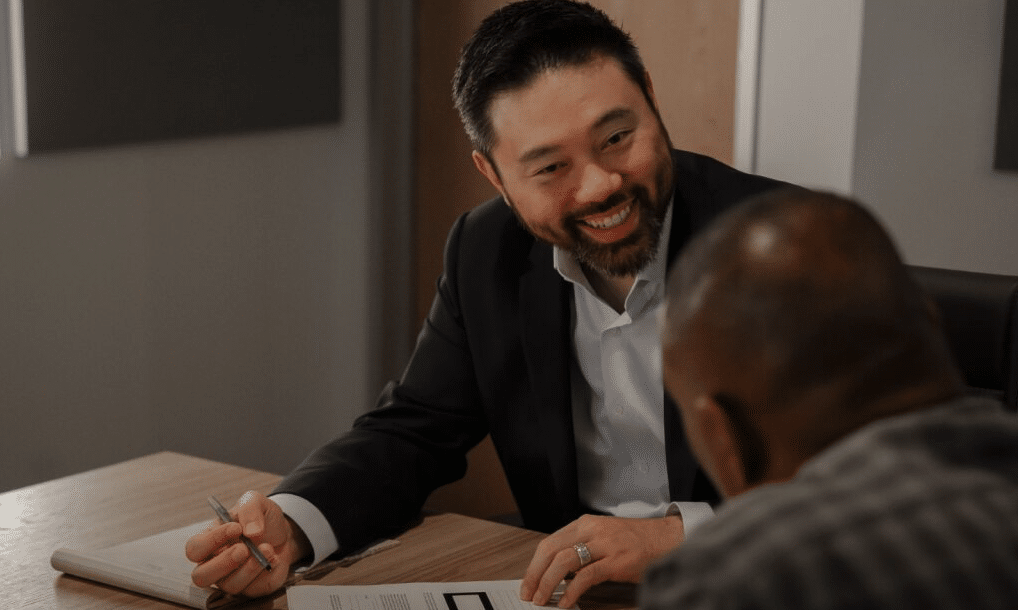Autor: Shelby Benavidez
Abogado colaborador: Michael Loh, partner
In personal injury law, trust is everything. Clients often come to you in one of the hardest moments of their lives – after a wreck, an injury, or a loss that’s turned their world upside down. At that point, they need someone who will listen, explain, and guide them through a process they don’t understand.
One of the most common complaints we hear from clients coming to us from other firms is that there was a lack of communication. They couldn’t get anyone on the phone, the updates were vague, and they were left feeling anxious and disconnected from their own case.
At Daniel Stark Injury Lawyers, communication is part of the firm’s DNA. Partner Michael Loh shared how his team builds credibility, consistency, and clarity with every client, and what other attorneys can learn from that process.
Build Trust Through Radical Transparency
The attorney-client relationship relies on trust and accountability, and trust starts with open, consistent communication.
Loh explains that from the moment a new case is opened, the firm’s goal is to establish a connection early and keep clients in the loop. “We contact clients immediately after their case is set up,” Loh says. “The legal team and attorney both introduce themselves, and from there, we make sure the client knows they can contact us at any time.”
At Daniel Stark, the expectation is that clients will receive a check-in every two weeks. However, we always encourage our clients to reach out if something comes up between regular check-ins. Proactive transparency helps clients feel seen, and it prevents small worries from growing into frustration.
“Don’t ever be afraid to just call a client,” Loh advises. “Even if you talked yesterday and something new comes to mind, call them. I’ve never had a client get mad at me for reaching out.”
Technology, when used respectfully, can help with communication and transparency. Daniel Stark uses Case Status to send automated messages when a case moves to a new stage. Loh makes sure clients know what to expect. “I tell clients they’ll get some automated texts from me,” he says. “Ideally, they can tell which ones are automated based on my tone, but I’m always upfront about it.”
Being upfront matters. When clients know how and when you’ll reach out to them, they feel more in control and like they’re taking an active part in their case resolution. We encourage other attorneys to set clear expectations for how often clients will hear from you and make sure to follow through. If you use automation to streamline updates, be transparent about it. When clients know what to expect and feel comfortable reaching out, trust grows and frustrations are minimized.
Communicate with Empathy and Client Care
A lot of personal injury clients come into the process feeling completely overwhelmed. Between doctor visits, therapy appointments, and waiting on insurance calls, they start to feel alone. When you take a minute to recognize that and show them you actually care about what they’re going through, it changes everything. They start opening up more about their pain, how they’re coping, and what life really looks like for them day to day.
As Loh puts it, “A lot of times, people are only involved in one wreck (hopefully) in their lifetime. It’s a big deal. We always want to go above and beyond to keep checking in, see how they’re doing – not just physically from their injuries, but mentally as well.”
Empathy can be simple but powerful. Even a quick two-minute call just asking how a client is healing can make as much of an impact as a long update about their case. Showing that you care builds trust and reassures clients that they aren’t just another file; they’re a person whose experience matters.
Meet Clients Where They Are
No two clients are alike, and neither are their communication preferences. Some prefer phone calls; others rely on text. Older clients might still use a landline and appreciate face-to-face meetings, while younger ones are more comfortable exchanging quick messages.
For personal injury attorneys, those differences can be amplified by the client’s situation. Many are recovering from serious injuries, managing pain, or juggling work and family after the disruption of an accident. “One of the most common things I hear from clients is, ‘I’m sorry I missed your call, I’ve been working seven days a week trying to catch up on bills after the wreck,’” Loh explains.
Sometimes, adaptability means quite literally meeting clients where they are. When clients are unable to respond or have lost access to a phone after an accident, you may have to drive out to their home to check in.
“There have been plenty of times I’ve just gone to knock on a client’s door,” Loh says. “They’re usually not avoiding us; they just didn’t realize we’d been trying to reach them. Once you sit down and talk, that connection gets rebuilt immediately.”
Personal injury attorneys are in the business of customer service, and effective communication isn’t always about what’s easiest for you – it’s about what’s possible for the client. Be flexible in how you connect, adjust to their circumstances, and don’t hesitate to go the extra mile, even if that means literally showing up at their door.
Maintain Consistency Across the Legal Team
In many firms, a personal injury case is handled by multiple hands, moving from intake to pre-litigation, litigation, and possibly multiple attorneys. Without clear internal processes, those transitions can create confusion, mixed messages, or even gaps in communication that leave clients feeling uncertain.
At Daniel Stark Injury Lawyers, consistency is built into the workflow. Standard operating procedures (SOPs) ensure every client receives regular check-ins, even when there isn’t a major case update to share. This approach keeps communication steady and predictable, no matter which team member is currently handling the file.
New attorneys and staff are also trained to uphold the same communication cadence and tone. Mentorship plays a role in reinforcing the firm’s client-first approach, ensuring that no matter who picks up the phone or sends the email, the client’s experience feels seamless.
We believe all firms should make communication consistency a firm-wide standard. Document your communication standards, integrate them into onboarding, and use them to create a unified voice across your entire firm.
Listen More Than You Talk
Many attorneys feel a responsibility to provide clients with every detail, every update, and every possible explanation. After all, part of the job is to keep clients informed and educated about their case. However, effective communication isn’t just about sharing information – it’s about knowing when to speak and when to listen.
“You can turn off a client very quickly by talking non-stop and not asking questions,” Loh says. “If you’re the only one talking, the client’s not going to trust you.”
Listening helps clients feel genuinely heard and helps you understand what truly matters to them. Some clients care most about covering their medical bills; others are focused on protecting their job or reputation. You can’t know those priorities unless you give them room to share.
At Daniel Stark, attorneys are encouraged to treat communication as a two-way street. Yes, we want to deliver information, but we also want to build trust through dialogue. When attorneys actively listen, they often uncover valuable details or concerns that improve case outcomes. Start by beginning every call with questions instead of statements and summarize what you’ve heard to confirm understanding. You may be surprised at how quickly your client will open up.
Developing Approachability in Client-Attorney Relationships
In personal injury law, it’s easy to forget how foreign this process feels to most clients. Medical terminology, insurance procedures, and settlement negotiations can sound like another language, and many clients are too intimidated to admit they don’t understand.
Part of effective communication is creating an environment where clients feel comfortable saying, “I don’t get it.” We always emphasize openness from the start to reassure clients that questions are always welcome. We’ll also ask questions throughout the process. That two-way honesty builds trust and keeps misunderstandings from taking root.
“It’s not easy for clients to say, ‘I don’t understand,’ especially early on,” Loh said. “So I make sure the dialogue stays open throughout the case. I’ll tell them, ‘Ask me anything.’ And I let them know I have questions too – that’s how we both learn.”
Sometimes clients come in with unrealistic expectations due to misinformation or past experiences with other firms. In those moments, communication means being honest – even when it’s uncomfortable. Delivering bad news or correcting false assumptions is part of protecting your client’s trust.
“I’m always 100% honest and upfront,” Loh says. “I try to soften the blow, but I’ve always been a ‘rip the Band-Aid off’ kind of guy.”
He approaches hard conversations as an informed perspective, helping clients understand without feeling dismissed. “I’ll say, ‘Here’s my opinion, based on my experience and the firm’s results.’ That helps clients feel respected, even if the news isn’t what they hoped for.”
We never want to sugarcoat information or overpromise because that doesn’t help our client; instead, we want to explain the situation clearly while remaining empathetic. When clients see the logic behind an outcome and feel their perspective is valued – even if it isn’t what they want to hear – they’re more likely to stay involved, cooperative, and confident in your representation.




